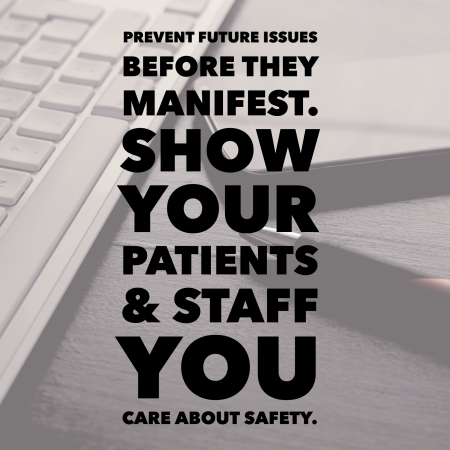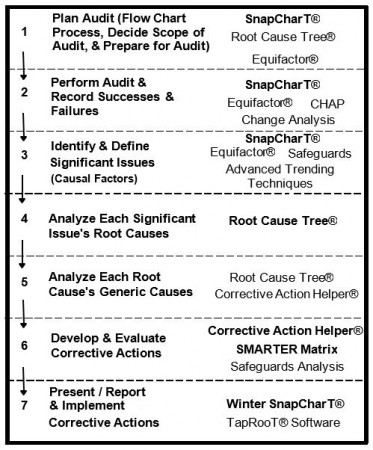How Can TapRooT® Help Prevent Falls and Maintain a Fall Prevention Program?

While reading Sentinel Event Alert 55 (SEA-55) from TJC issued September 28, 2015 on Fall Prevention, it occurred to me that TapRooT® can be used to aid in finding the root causes of the fall. Even more importantly, TapRooT® can be used to aid in maintaining your fall prevention program to ensure long-term success. The TJC lists the following common contributing factors (in TapRooT® these would be called “Causal Factors“):
- Inadequate assessments
- Communication Failures
- Lack of adherence to protocols and safety practices
- Inadequate staff orientation, supervision, staffing levels and skill mix
- Deficiencies in the physical environment
- Lack of Leadership
While these are good guidelines for what to look for and what data to gather, to us these do not represent root causes. These 6 items almost match up with most of the 7 Basic Categories on the back of our Root Cause Tree®. So as TapRooT® investigators, know you have to dig a bit deeper to find the true causes and define those at the Root Cause level not at the causal or contributing level.
All this being said, the more important reason I wanted to write this article is to highlight the use of your TapRooT® tools by using them for Proactive measures. How to examine and improve your fall management program and maintain continued success. Too many times we don’t think about the power of observation and the idea of raising awareness through communication. Each of these can be highlighted through the Proactive Process Flow below:

In SEA-55, two of the actions suggested by TJC were to 1) Lead an effort to raise awareness of the need to prevent falls resulting in injury and 2) Use a standardized, validated tool to identify risk factors for falls. These two items can benefit from the TapRooT® tools directly.
Starting with step 1 above in the Proactive Flow, use the SnapCharT® tool to outline the steps in patient assessment, highlight the steps that can or will affect the fall prevention portion of patient care, then use this flow as the basis for an observation program. By getting out and observing actual performance in the field you can do two things, show your concern for patient safety (and falls in this case) and gather actual performance data. These observations can be performed both in a scheduled and/or random fashion and can be done in any setting (ambulatory, non-ambulatory, clinic et cetera).
During the observation, document findings on the SnapCharT® and identify potential “Significant Issues” as they apply to fall prevention. This data can then be either evaluated using the Root Cause Tree® to define the areas of need for that single observation, or the data can be combined with other fall prevention observation data for use in an aggregate analysis or common cause analysis. With the aggregate analysis data from multiple observations can be combined, and “Significant Issues” can be identified based on multiple observations before an analysis using the Root Cause Tree® is performed. This could give you an overall bigger picture view of your processes.
Once the RCA is performed (in either situation), Steps 5-7 can be simply followed to produce some recommended actions to be implemented and measured using Corrective Action Helper® and SMARTER. And the beauty of this Proactive process is that you have not waited for a fall to learn. You and your organization are preventing future issues before they manifest thus showing your patients and staff that you truly care about their safety.
If you would like to learn more about using your TapRooT® tools proactively you can contact me at Skompski@taproot.com for more information or you can attend any of our public seminars, 2-day or 5-day to learn more on both the reactive and proactive use of the TapRooT® tools!



